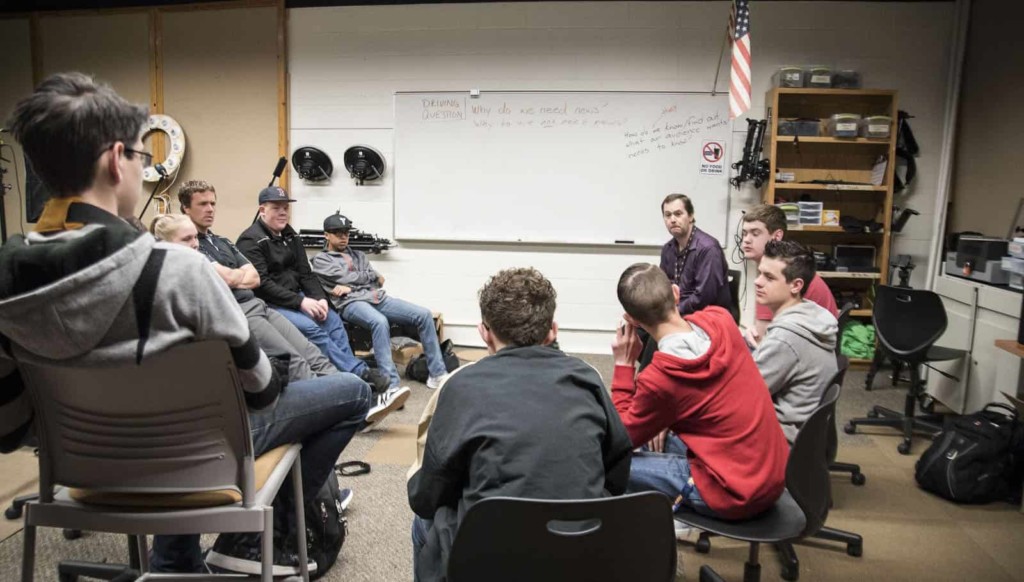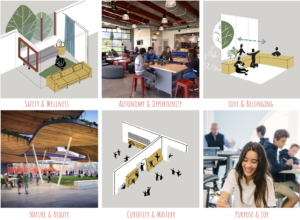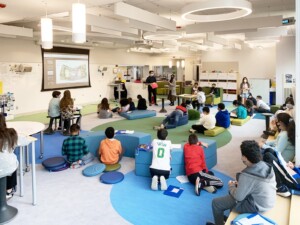Broken Windows: The Powerful Effect of Environment on Behavior

I was first introduced to the idea of the Broken Window Theory when I read the book, Tipping Point by Malcolm Gladwell. To be concise, the theory suggests that when an environment is perceived as disorderly or chaotic, such as when a neighborhood has homes with broken windows that go unrepaired, disorderly conduct is the inevitable result. Reading about this theory and in doing some additional research, I am led to believe that our environment has more of an impact on our behavior than other factors might.
So now, when I walk through my own school, I am wondering, “Do we have any broken windows?” My school is one where the culture is based on trust, respect, and responsibility. Our staff builds strong relationships with students and, generally speaking, we have a great environment. However, we have our issues, like any other school. Sometimes our students don’t care to clean up after themselves. Sometimes norms aren’t kept and people are left feeling frustrated and disrespected. After learning about the Broken Window Theory, I’m constantly wondering what may have changed, even for a moment, about our environment to encourage such behavior.
Perhaps that scrap of paper in the middle of the hallway has been there too long and students are getting a sense of disorder and are reacting accordingly. Perhaps a student, having a bad day, lashes out at another student. No one present steps up to hold that student accountable and now the perception is that that kind of behavior is tolerated. It would take a handful of behavioral scientists and a few months of close observation and testing to find exactly how our unique school environment is affecting the behaviors of our staff and student body.
I don’t have a handful of behavioral scientists, so I have to hypothesize on my own and ask my own questions. One that keeps coming up is, “The environment didn’t make itself. We made it. So what did we do to create the broken windows we might have?” The answer is tricky because, most likely, we’ve done loads of things that created some kind of chain reaction that eventually created a broken window in our school.
What if I came to school one day, tired and unmotivated. In that mood, I failed to treat a student with respect. Rather I treated him or her as a subordinate who will “listen and obey” instead of as a fellow human being, equal to me and deserving of my patience and respect. That student perceived the environment to be that of inequality, a “us vs them” kind of situation. They and some of the students who witnessed the exchange became combative. Others, who saw the obstinance of the wounded students, reacted with fear and confusion and disengaged from the class, hoping to “bury their head in the sand.” Learning has ceased. Unless I repair the window I just broke, my class environment will continue to degrade until it ceases to resemble the original environment of mutual respect.
Sounds like an unlikely quick descent into chaos, but because our class environments are made by our choices and the choices of our students, they can change as quickly as the words fly out of our mouths.
So each day, we have to ask ourselves, “Am I the broken window?” In addition to that question, we should also be thinking about what we’re doing to mend the broken windows we see. It is not the presence of the broken window that causes disorder in an environment. It is seeing that broken window go without repair day in and day out that degrades our behavior. Disrespectful behavior and the loss of a fantastic school culture are the results of too many broken windows that remain broken day after day.
 A good teacher knows that a good, thriving school culture deserves to be protected and preserved. It’s that important.
A good teacher knows that a good, thriving school culture deserves to be protected and preserved. It’s that important.
- Don’t let broken windows go. From scattered trash in the hallways to negative attitudes, commit now to mending those broken windows before they can have an impact on your school culture. And don’t mend alone. Gather fellow teachers and students and correct your environment together.
- Remind yourself that the behaviors you’re seeing aren’t happening in a vacuum. There’s a reason for everything. If you have control over the reason, work to fix it. If you don’t have control over the reason, as when a student might have a troubled home life, work a little harder to make sure that at least one of their daily environments is supportive and safe and then have the patience and compassion when the chaos of their other environment affects yours.
- Don’t just look for opportunities to fix broken windows, look for ways to spruce them up too. Upgrade your environment by adopting methods and practices that bring out the best in your students. This year, our staff decided to celebrate random “National Days.” Some might be something like “National Hot Cocoa Day,” or “National Scrabble Day.” On “National Homemade Cookie Day,” the staff brought enough cookies for our entire student body, set them up in one of our main hallways, got on the intercom and told classes to take a five-minute cookie break. The students swarmed the cookies and gleefully chatted away saying things like, “This is so unexpected and so cool!” and “This is so nice of them (the teachers) to do this for us!” This is how we spruced up our “windows” that day and it paid off as we saw a lot more random niceness throughout the school.
Our environment impacts our behavior, period. We are constantly reacting to the people and things in the world we live in. We may not always be fully conscious of how strongly we are influenced by our environment, but once we decide to pay attention, the relationship between our environment and our behavior becomes clearer and when that happens, we can do something about it.
For more, see:
- Creating the Right Culture for Social and Emotional Learning
- Creating Positive Learning Environments for a New School Year
- Creating a Mindful Classroom Environment
- How To Ger Students Talking About Their Own Social-Emotional Learning
Stay in-the-know with all things EdTech and innovations in learning by signing up to receive the weekly Smart Update.





Terri
Fantastic article and thought process!